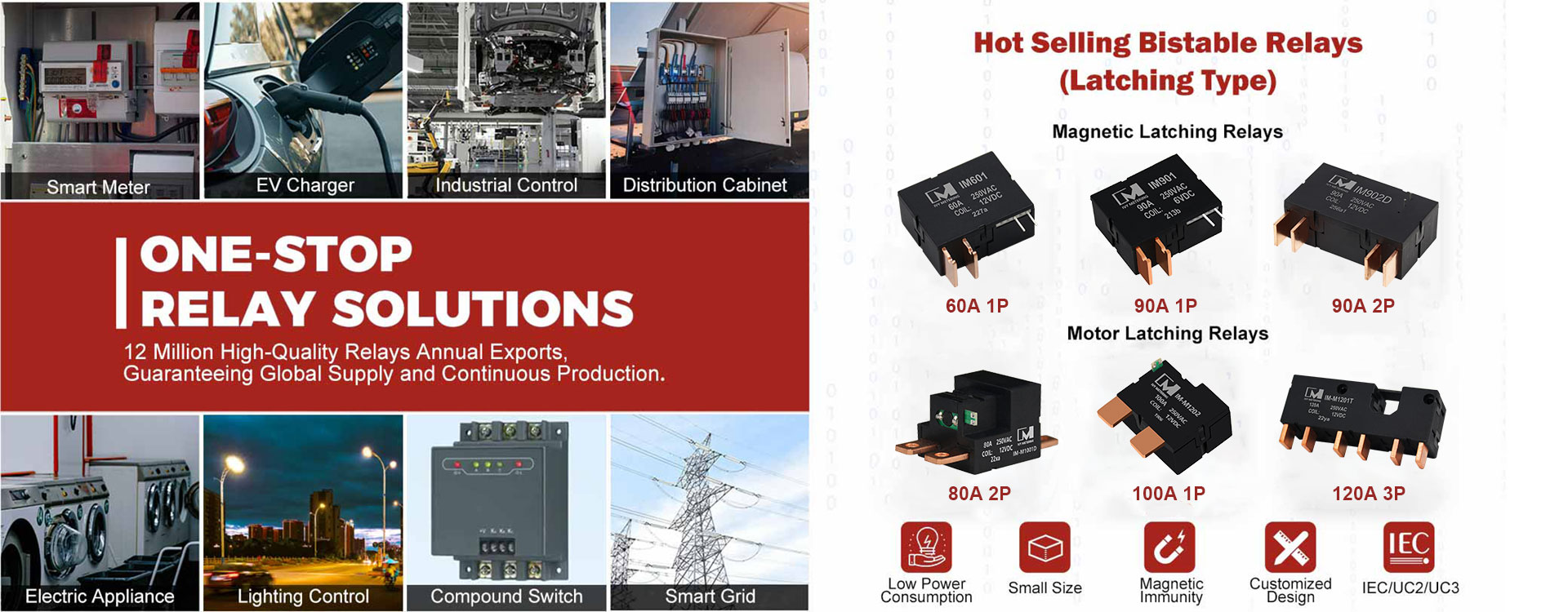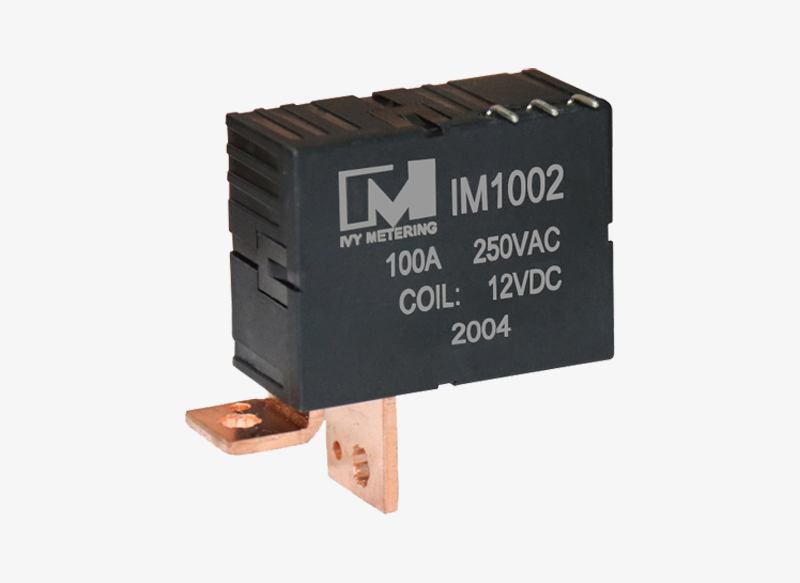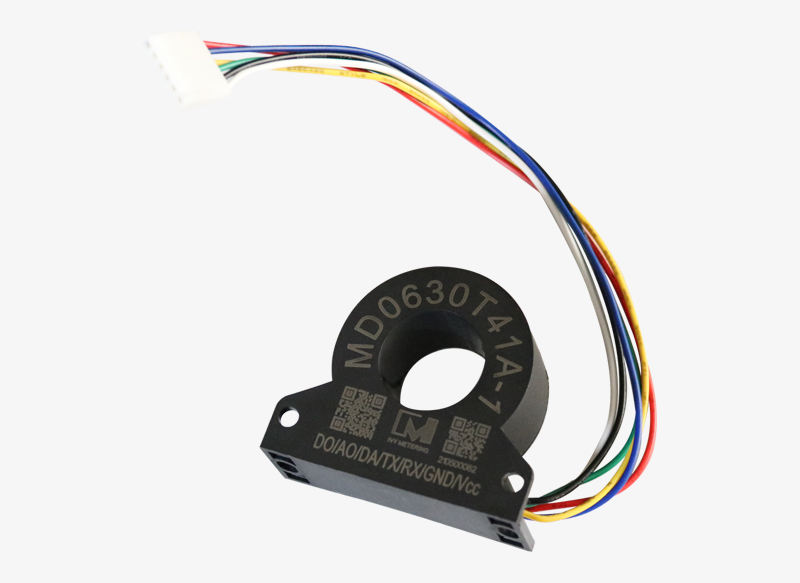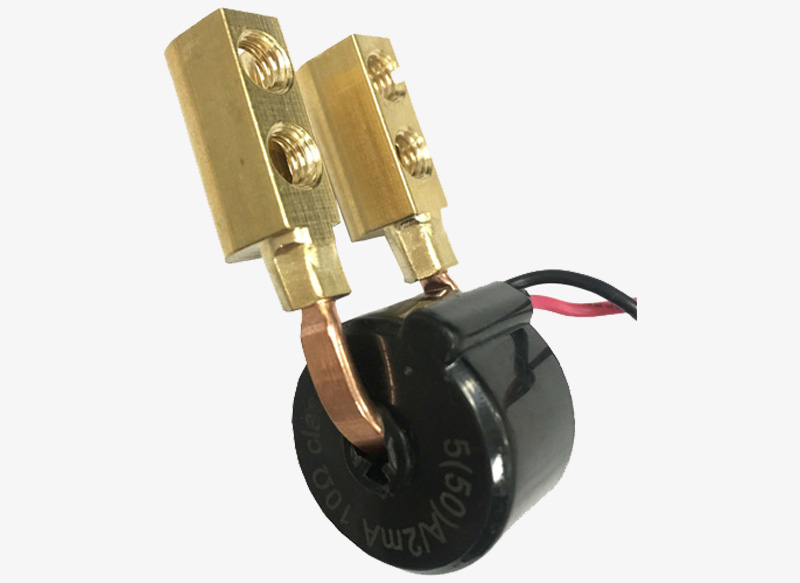Product Introduction
Both IM901D and IM902D are 2-pole latching relays with MAX current up to 90A, and switching 90A 250VAC. Single and Double coil optional. The main advantages of the two groups of relays include long life, high reliability, high sensitivity, low power consumption, good electromagnetic compatibility, fast switching, and low electromagnetic interference. Widely used in smart meters, EV chargers, compound switchs, lighting control systems, and industrial automation.
The difference between these two relays is as follows
Connection method: IM901D is PNNP type, IM902D is PPNN type.
Size: IM902D is smaller than IM901D. Price: IM902D is cheaper than IM901D
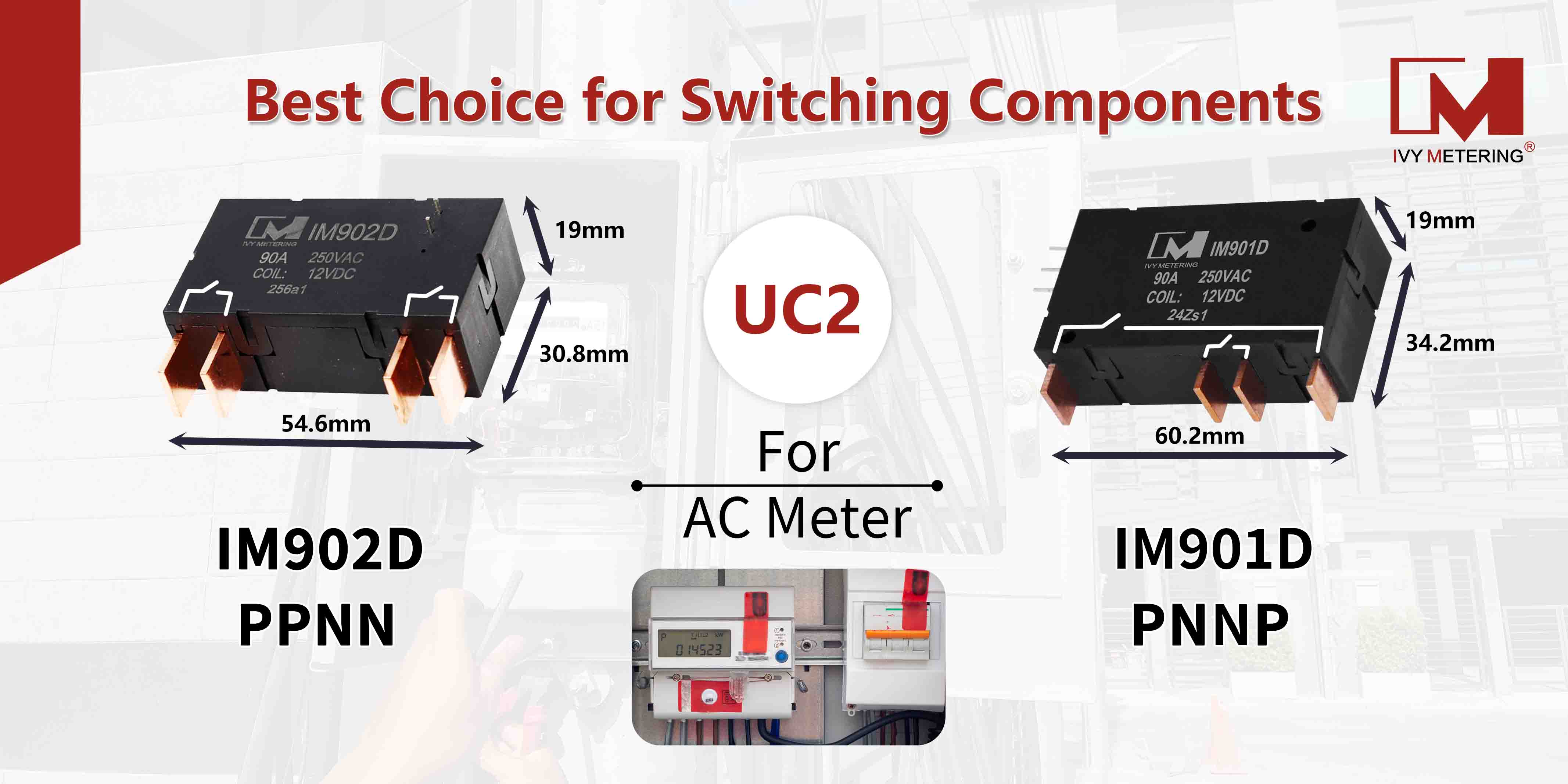
IM901D IM902D Product Features
Small size, big switching power, and low consumption
Coil instantaneous pulse driving and without fever
Stable permanent magnet force and save energy
Low contact resistance, stable and reliable, anti-vibration/anti-shock.
4kV dielectric strength between coil and contacts
Custom assemblies available with flex wire and/or copper straps, and/or with integrated shunt
IEC62052-31 UC2/UC3 standard
IM902D Product Parameters
Dimension(mm) | 54.6*30.8*19 | |
Weight ( g ) | ≈66g | |
Contact Arrangement | 2A/2B | |
Contact Material | AgSnO2 | |
Ambient Temperature | -40~+85℃ | |
Ambient Humidity | 45%~95%RH | |
Vibration | 10~55Hz,1.5mm(DA) | |
Nominal Voltage | 6~24VDC | |
Power Consumption | Single Coil:2.5W, Dual Coil:5W | |
Max. Switching Voltage | 250VAC | |
Max. Switching Current | 90A | |
Contact Resistance | <0.8 mΩ | |
Insulation Resistance | 1000MΩ(DC 500V) | |
Dielectric Strength | Across Open Contact | >2000VAC 1min |
Coil To Contact | >4000VAC 1min | |
Electrical Life | >10,000cycles | |
Mechanical Life | >100,000cycles | |
Picking-up & Release Time | ≦30ms | |
Pulse Duration | ≧100ms | |
Functional Shock Resistance | 10G | |
Destructive Shock Resistance | 100G | |







